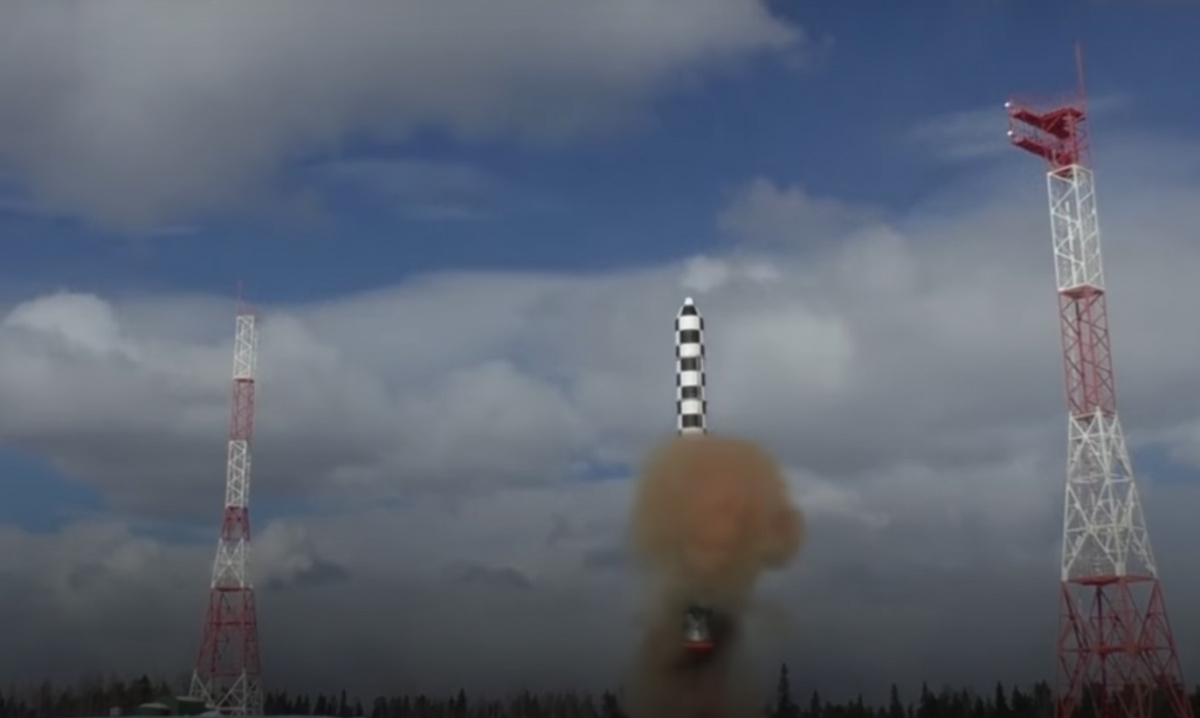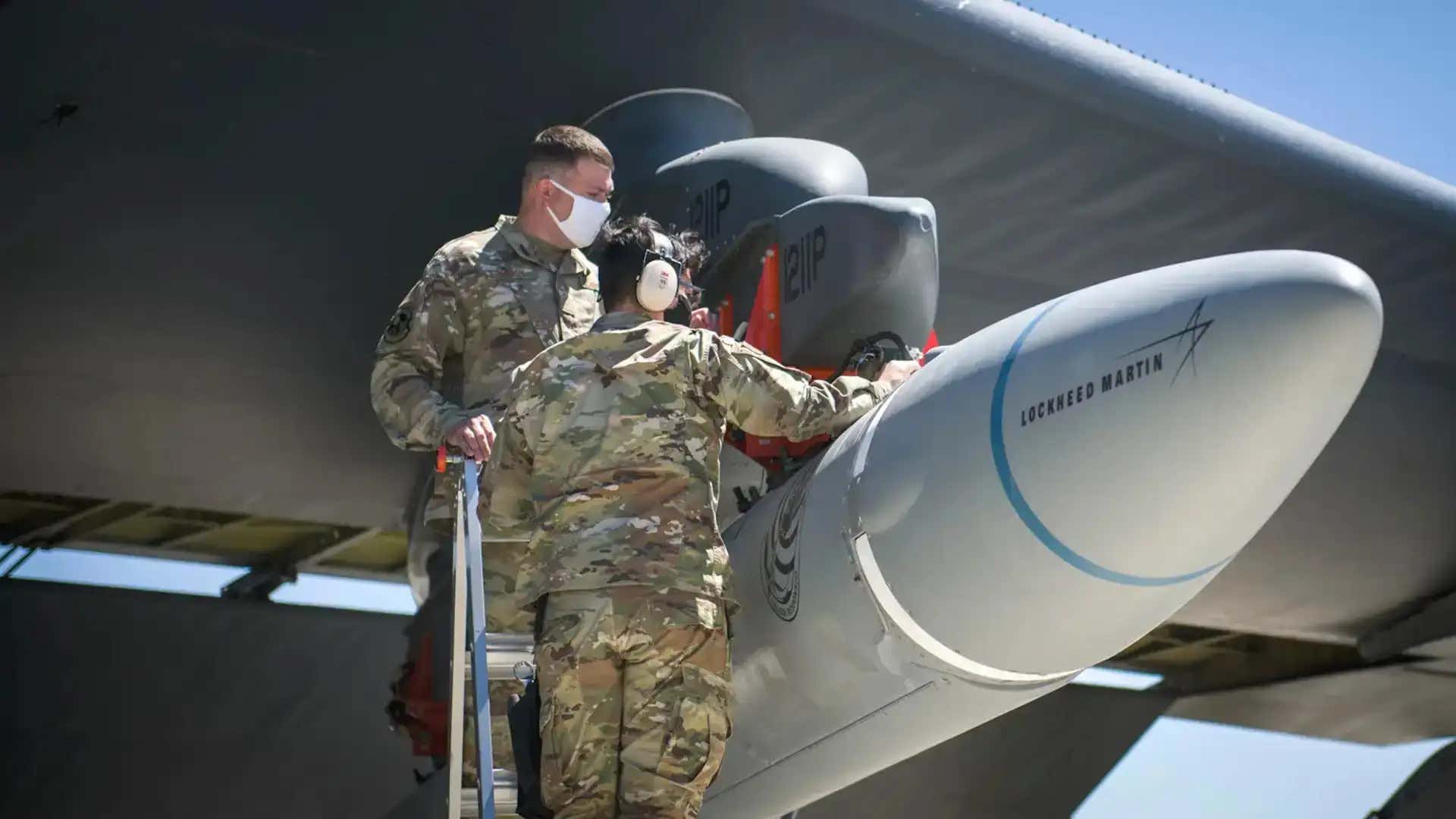Flight tests of Russia’s new intercontinental ballistic missile Sarmat will begin later this year and should be inducted into the military by 2022, Defense Minister Sergei Shoigu said on Friday.
“Flight tests [will begin] this year and should be completed in 2022. In 2022, the first batch should enter service with the strategic missile forces,” Shoigu told reporters at the Krasnoyarsk Machine-Building Plant.
The Sarmat missile, set to replace the world’s heaviest strategic missile Voyevoda, has a firing range of 18,000 kilometers (11,185 miles), and its launch mass totals 208.1 tonnes. The payload capacity of the missile amounts to over 10 tonnes.
The missile is 35.5 meters (116.5 feet) long and has 3 meters in diameter, and its fuel load totals 178 tonnes.
US Hypersonic Missile – Lagging Behind
The US Air Force is yet to find out the exact cause of the glitch days after its second attempt to fight-test the AGM-183A Air-launched Rapid Response Weapon (ARRW) failed.
The failure was seen as a major setback for the US military at a time when its rivals — Russia and China have made rapid strides in the hypersonic domain.
F-35 Jets: Is World’s Most Powerful Stealth Fighter Jet Losing Its ‘X-Factor’ At Supersonic Speeds?
The test was conducted on July 28 over the Point Mugu Sea Range in the Pacific Ocean, off the coast of Southern California and the result of this test was announced by the US Air Force on July 30.
The missile was able to successfully separate from the B-52H bomber which was carrying it, however, the rocket engine did not ignite. While the Air Force is still trying to figure out the reason behind this failure, there is still time for the program to complete the flight testing and proceed towards the production of this new, “cutting-edge weapon” by the end of the fiscal year 2022, a program official said on August 3.
US officials have been unable to identify what went wrong during the test or how to fix it, said Brig. Gen. Heath Collins, the Air Force’s program executive officer for weapons.
“If that is a quick and rapid resolution, then we would have minimal perturbation to our schedule, and we would look to get back in the air when our next test window is available,” he told reporters during a roundtable.
“If it is a little more prolonged or drives anything excessive from a redesign perspective — which we don’t know at this point — depending on how long that takes, it may impact our ability to meet our next test window as we go forward”.
The #TestFlight demonstrated several first-time events for the Air-launched Rapid Response Weapon program. https://t.co/2v4jlBLCuP
— Eglin Air Force Base (@TeamEglin) July 30, 2021
The Air Force is yet to complete the final flight testing of the ARRW booster and all-up round before it awards the contract to manufacturer Lockheed Martin and begins production of the weapon, which is currently targeted for FY22, Collins said.
Any lengthy redesign of the missile could cause that date to slip, as reported by Defense News. The Air Force has set aside $161 million as its budget request for FY2022. This is for procuring the first twelve AGM 183As. These are going to be the US military’s first hypersonic weapon available for operations.

Funds Fracas
The House Appropriations Committee’s defense spending bill would, however, reduce its spending on the program by $44 million as it is concerned that the Air Force might be going ahead with production without solving all technical issues.
With this reduced budget, the Air Force will be able to acquire only eight missiles by the end of FY2022.
Collins also acknowledged that the missiles manufactured by Lockheed Martin did encounter several problems while testing, but he also added that any change in the planned procurement of 12 ARRW missiles would only result in increased costs and could also impact the supply base.

“Any rapid prototyping effort of a new hypersonic weapon would be a “risky program” by nature, but the ARRW effort is making progress on resolving technical problems”, Collins said. He highlighted that the error caused during the first missile testing in April was rectified by the Air Force.
“In the attempt to launch … a week ago, we showed that that root cause, that corrective action, was sufficient and working,” he said. “And we’re now going to learn from this next step and move forward”, Collins was quoted as saying by Air Force Magazine.
Eurofighter Typhoon Shoots Deadly BVR Meteor Missile In First-Ever Flight Test – Watch
The missile smoothly separated from the aircraft and successfully demonstrated the full release sequence including GPS acquisition, umbilical disconnect, and power transfer from the aircraft to the missile. It also demonstrated fin operation and de-confliction maneuvers, ensuring a safe operation for the aircrew.
“While it did not meet all flight objectives, the test demonstrated several first-time events as the program continues to track toward fielding a hypersonic capability in the early 2020s,” the service said.
As the US Air Force faced two successive failures, arch-rival Russia has been successfully testing its hypersonic weapons. Russia has three major hypersonic weapons — the Avangard, the Kinzhal, and the Zircon — which President Vladimir Putin has dubbed “invincible”.
And all of them cleared tests. On July 19, the Russian Admiral Gorshkov frigate had successfully test-fired the Tsirkon (Zircon) hypersonic missile against a surface target at the range of over 350 km and the flight speed reached 7 Mach, the Russian Defence Ministry was quoted as by RIA Novosti.
The Avangard hypersonic intercontinental ballistic missile (ICBM) is the most potent among all three, which can deliver both nuclear as well as conventional payloads.
With Inputs from Sputnik News Agency




